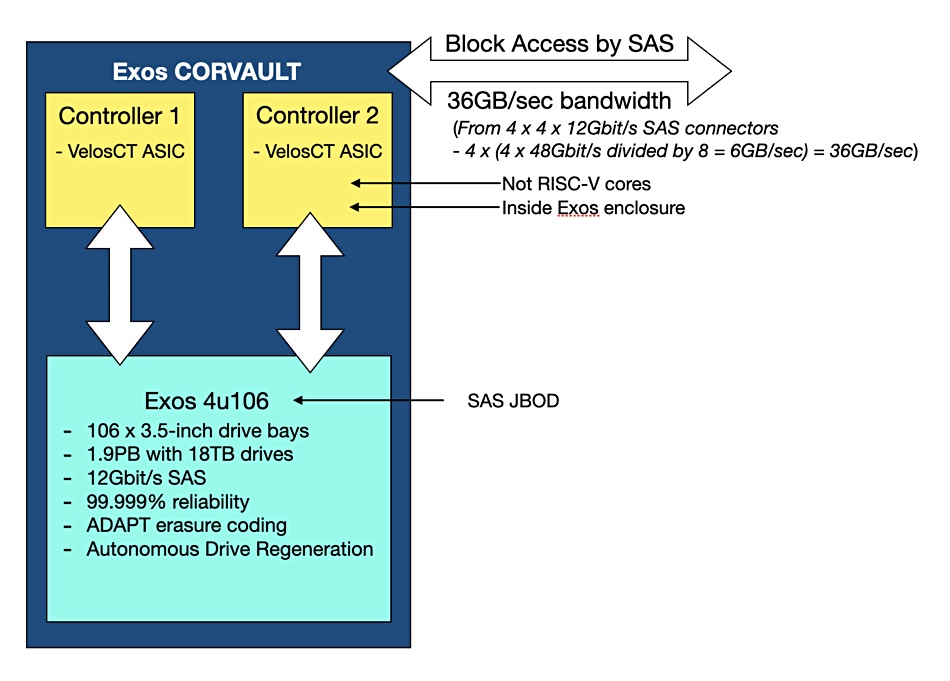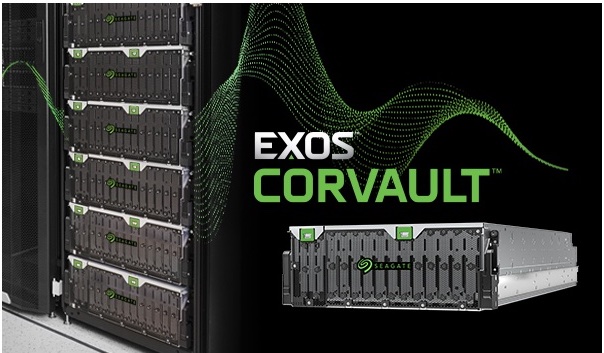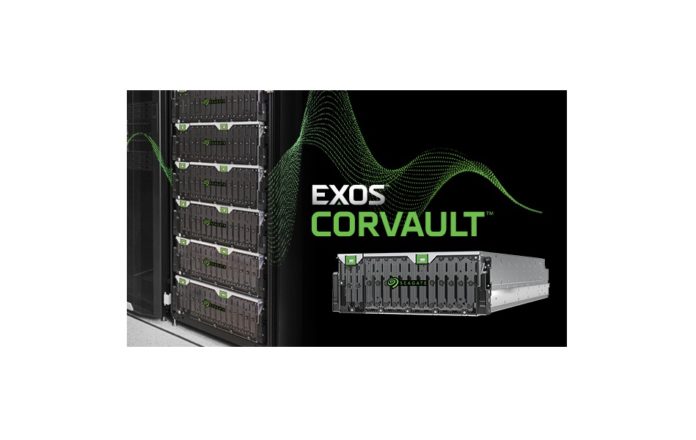Seagate has announced its Exos CORVAULT, a 1.9PB SAS JBOD taking up just four rack units, providing 19PB in a full rack — if your floor can take the weight — and no-touch drive service for up to five years.
The CORVAULT provides up to 36GB/sec of bandwidth, Seagate characterising this as SAN-like performance, and is based on Seagate’s Exos 4U106 enclosure, with 106 x 3.5-inch drive bays supporting 18TB drives.
Seagate’s announcement says CORVAULT is designed to streamline data management and reduce human intervention for macro edge and data centre environments.
There are two drive controllers, each based on a sixth generation VelosCT-branded Seagate ASIC which provides ADAPT-branded erasure coding for data protection and ADR (Autonomous Drive Regeneration). Each controller has 4 x 12Gbit/sec SAS connectors and is located inside the enclosure. There is an Ethernet interface for management access, not data. The controllers do not use RISC-V cores.

ADAPT (Autonomic Distributed Allocation Protection Technology) distributes data across every drive and enables faster drive rebuilds by having all the existing drives contribute. The VelosCT chip is said to optimise all drive actuators in parallel, which helps speed both general and failed drive rebuild performance.
A Seagate spokesperson told us “a single drive failure in a CORVAULT ADAPT configuration would rebuild in approximately 20 per cent of the time required for an equivalent 16 drive RAID 6 array” and 5.3 hours is noted on an ADAPT data sheet.
All drives in an ADAPT disk group must be the same type, and in the same tier, but can have different capacities. The system automatically defaults to a target spare capacity that is equal to the sum of the two largest disks in the group. The target capacity is large enough to fully recover fault tolerance after loss of any two disks.

The ADR functionality comes into play if a drive fails. It can bypass (depopulate) errant disk drive heads so that the rest of the drive can continue operating. This does not use any of the IP that was developed by Xiotech for use in its ISE devices — sealed canisters of disk drives back in the 2009 era.
Seagate suggests a CORVAULT can continue operating for up to five years with no human physical access required. Even so, the disk drives, power supply units, cooling modules, side-plane expanders and IO modules are all hot-swappable.
CORVAULT offers “five nines” (99.999 per cent) reliability to help provide consistent high availability. A CORVAULT cannot scale past a single enclosure, and there are no plans to support shingled disk drives, NVMe drives or NVMe-oF access.
Systems will be available globally via qualified Seagate distributors in July.








